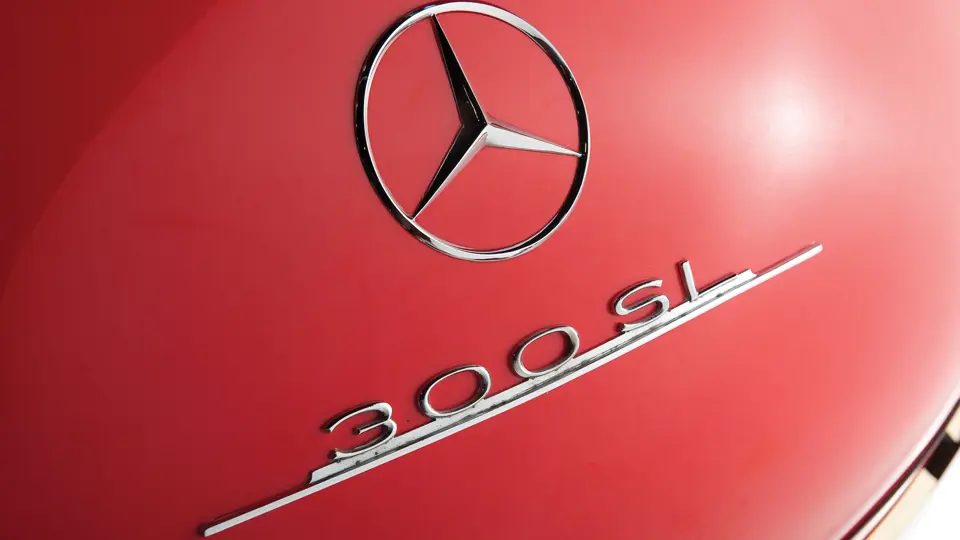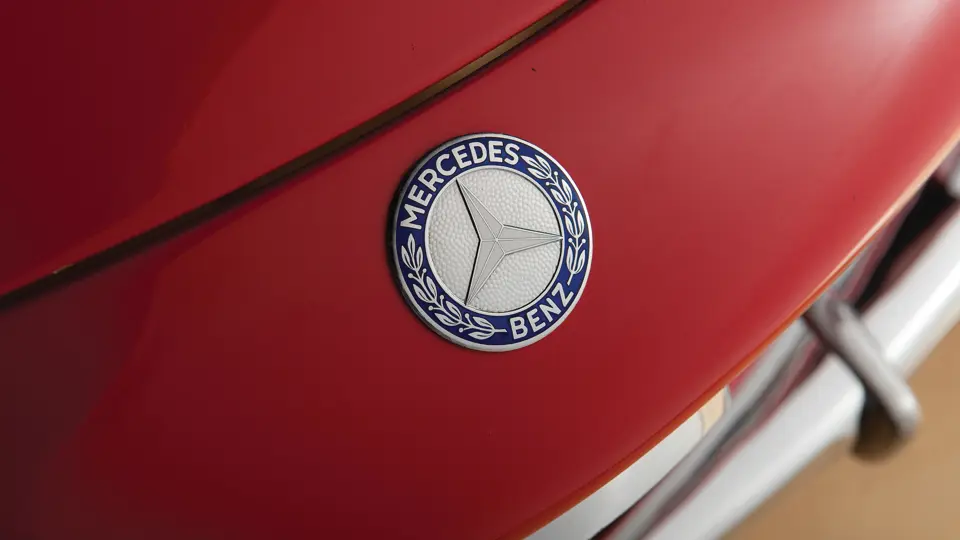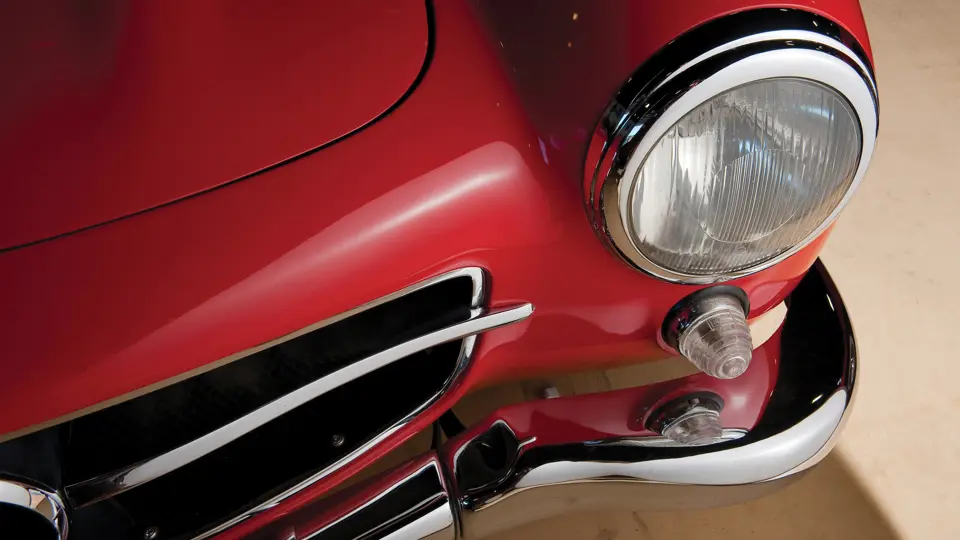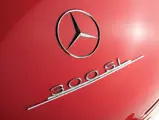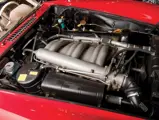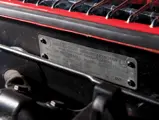240 bhp (SAE rating), 215 bhp (DIN rating), 2,996 cc OHC inline six-cylinder engine, four-speed all-synchromesh gearbox, independent front suspension with twin wishbones, coil springs and anti-roll bar, swing axle rear suspension with coil springs, hydraulic telescopic shock absorbers, and four-wheel hydraulic drum brakes with servo assistance. Wheelbase: 94.5"
• Desirable Rudge wheels and fitted luggage
• Legendary performance and styling
• Recent service and sorting
Many sports-car aficionados name the Mercedes-Benz 300SL as the greatest road car ever built, and no one who has ever owned or experienced a 300SL Gullwing Coupe will likely ever forget it. The original Mercedes-Benz 300SL was created for the 1952 racing season by the company to test the waters prior to making a full-scale return to competition. It was practically makeshift expediency to allow an early entrance to racing following WWII and to keep the Mercedes-Benz name in the news long enough for the firm’s 1954 Grand Prix car to be completed. To deem this exercise successful is a huge understatement, with stellar results including a second and fourth place finish at the Mille Miglia, first and second at Le Mans and the Nürburgring, the same in the Carrera Panamericana and one-two-three at Bern, Switzerland.
Mercedes-Benz did not intend to put the car into series production, but U.S. importer Max Hoffman had other ideas. Hoffman, both a master marketer and a man of great insight, convinced Daimler-Benz to offer a production model by ordering 1,000 of them to be built and sent to the United States. Since the competition model utilized existing parts from Mercedes-Benz’s 300-series saloon cars, it seemed relatively easy for the manufacturer to honor his request. The car, however, was exceedingly complex and not well-suited for volume production. Nonetheless, thanks to the persistence (and clout) of Hoffman, M-B proceeded with limited production.
Fuel injection replaced the racecar’s carburetors; the Bosch mechanical unit was a first for a production car. The new Karl Wilfert-designed body was largely steel rather than all-aluminum and included bumpers and other creature comforts not required for competition. Even in production form, underneath remained Rudi Uhlenhaut’s brilliant lightweight tubular space-frame chassis and the powerful 3.0-liter six-cylinder engine.
The 300SL was the first Mercedes-Benz to be introduced in the United States before it was shown in Germany. It was unveiled in New York on February 6, 1954 and immediately took the automotive world by storm. The SL moniker reflected the pioneering use of multi-tube space frame construction. The gull-wing doors used on the racing version of the car were continued on the production car, as they were necessary to maintain structural integrity. The 300SL also featured fully-independent suspension in addition to its fuel-injected, 240 hp, 3.0-liter (2,996 cc) straight six with dry-sump lubrication; the motor inclined to the side to reduce the car’s frontal area. Power was delivered through a four-speed manual gearbox, giving the car top speed of up to 150 mph and 0-60 acceleration in just 8.8 seconds, making it the fastest production automobile of its time. The 300SL was priced from $6,820, an impressive sum for the era.
Hoffman’s original request of 1,000 cars was exceeded as production of the semi-hand-built car reached just 1,400 units. The 300SL Coupe was discontinued after the 1957 model year, when the 300SL Roadster replaced it. Today, it remains one of the most recognized, coveted and collectible of all sports cars ever built.
Prior to its acquisition by the current owner, this 1955 300SL had been well maintained and regularly used in driving events. The odometer currently reads about 77,000 miles, which are believed to be original. Factory-original fitted luggage is also included with the car, and the color matches the interior perfectly, further providing evidence that the interior upholstery, which displays a lovely patina, is most likely original. Desirable features include a Becker Le Mans radio and, in the trunk, the original jack and a complete reproduction tool roll. All exterior body panels are straight and true, and the undercarriage is equipped with belly pans.
Recent work performed under the fastidious current owner includes the installation of a complete set of desirable Rudge knock-off wheels, which necessitated the installation of new wheel hubs and new rear axles. Braking is now much more effective, following cleaning of the master cylinder, re-sleeved and rebuilt wheel cylinders and new brake drums all around with new Kevlar brake shoes. The fuel system was serviced with the fuel tank cleaned out, and the fuel-injection pump was completely gone through and equipped with new lines. The oil cooler was cleaned out, and a new water pump was installed. Other recent mechanical work included a valve adjustment, the installation of new rear coil springs and a new set of tires. The interior received a new headliner as well.
Nicely presented and properly maintained and sorted, this 300SL has traveled approximately 200 miles since the recent work was completed, with 1,000 miles in total since acquisition. As such, it is reported to run and handle very well, especially on the open road, its natural element.
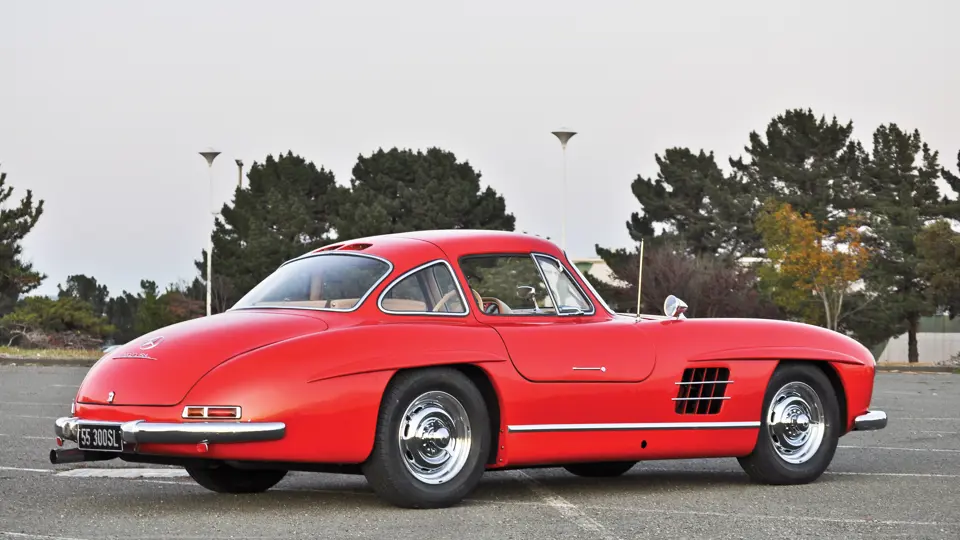



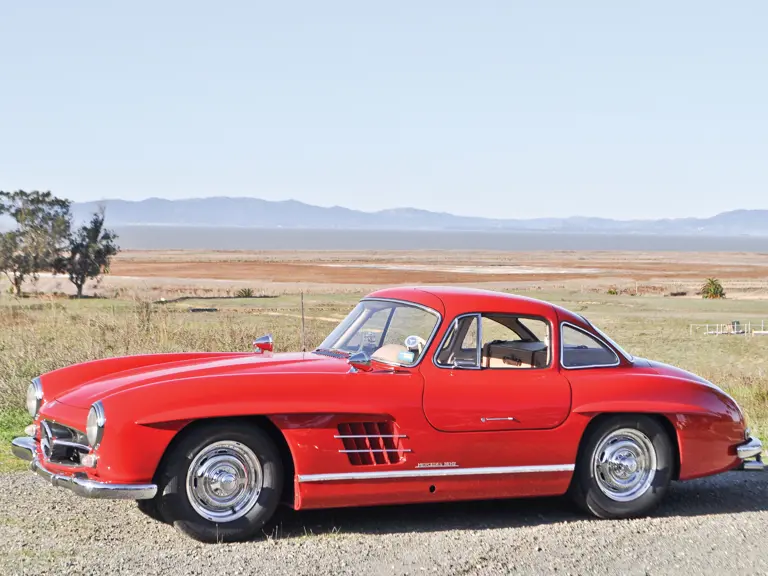
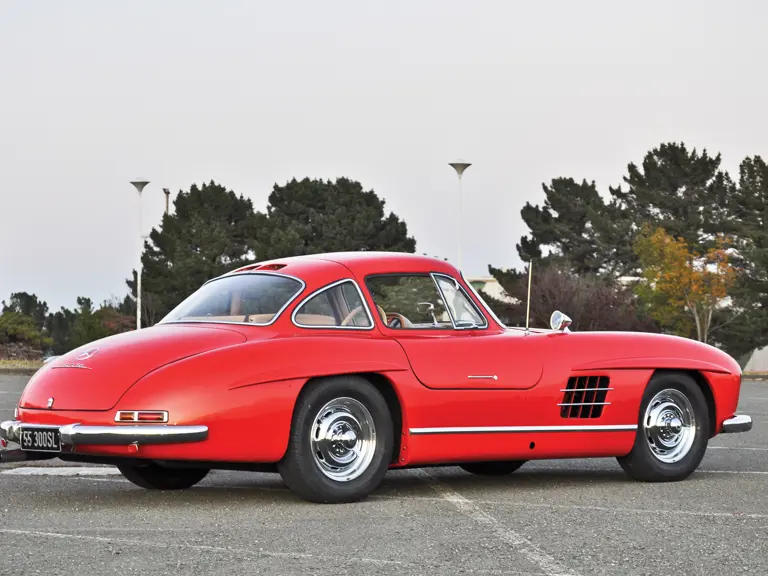
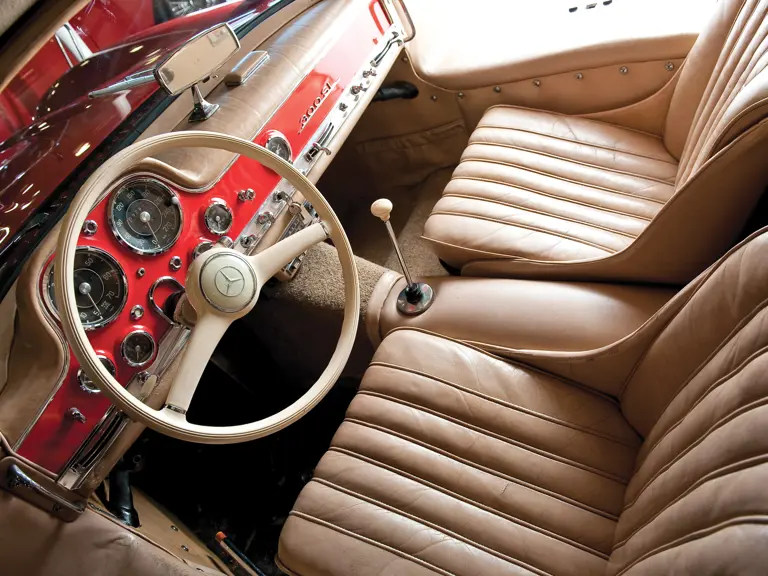
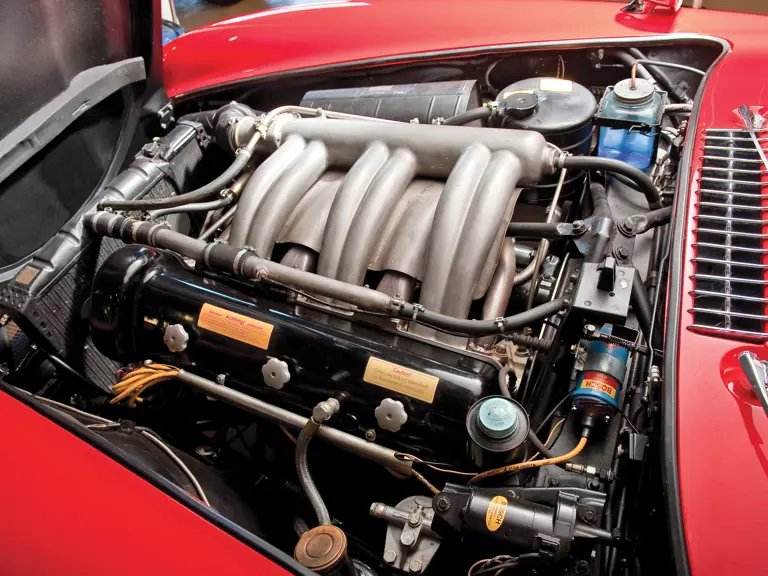
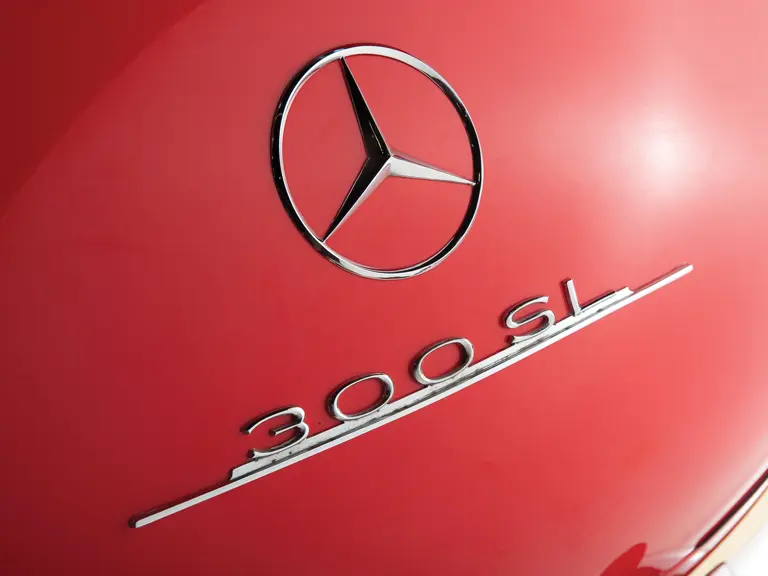
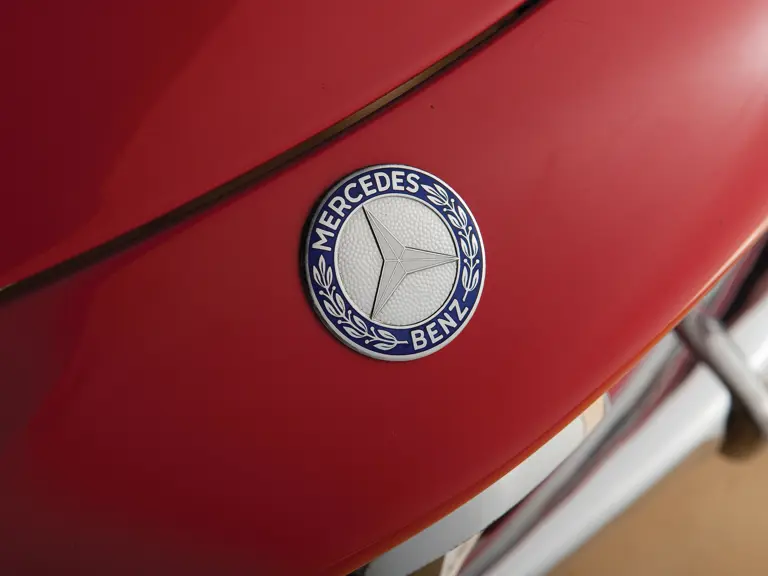


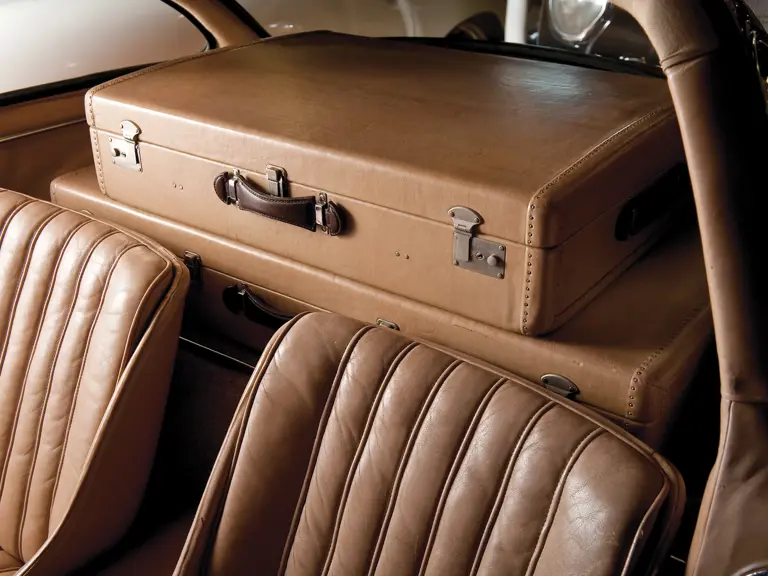
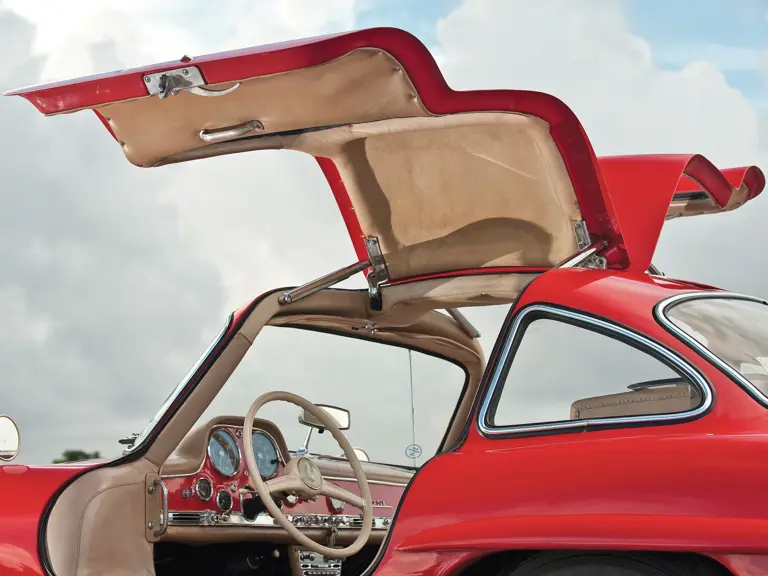
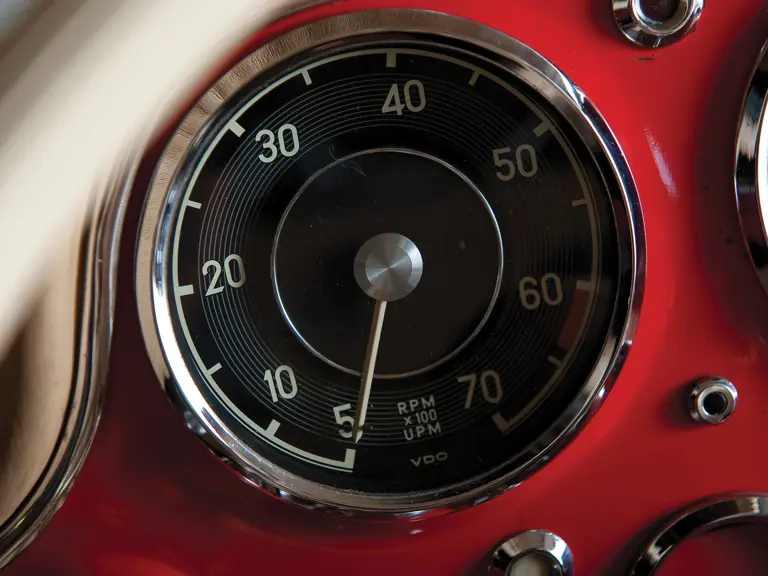
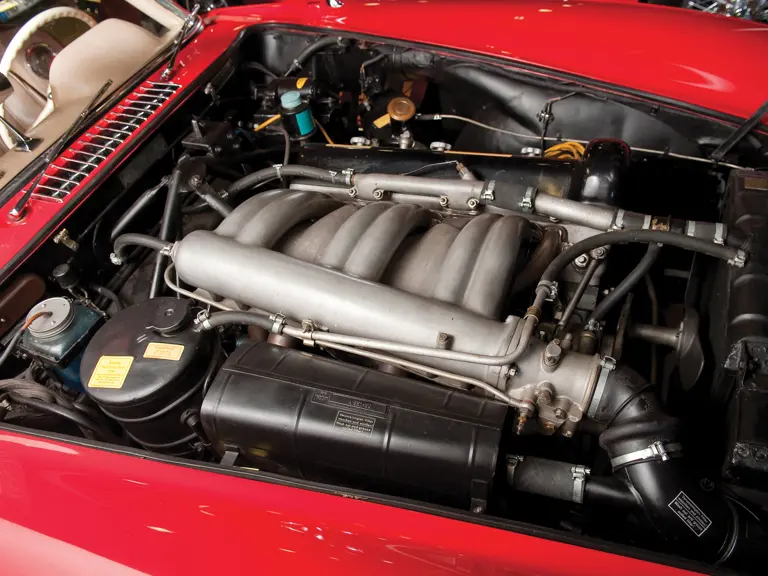

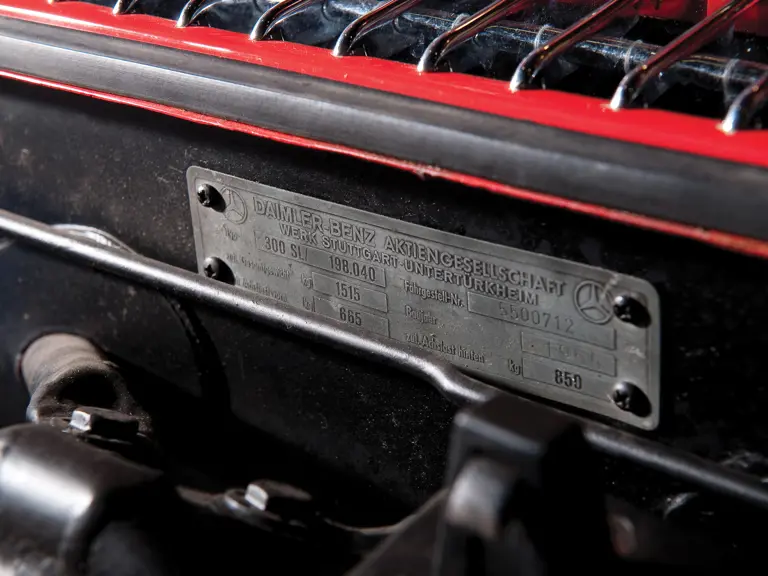
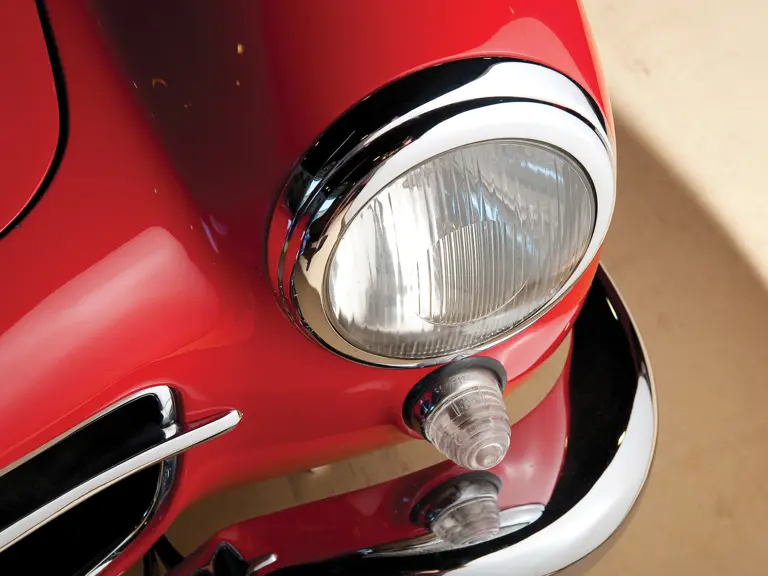
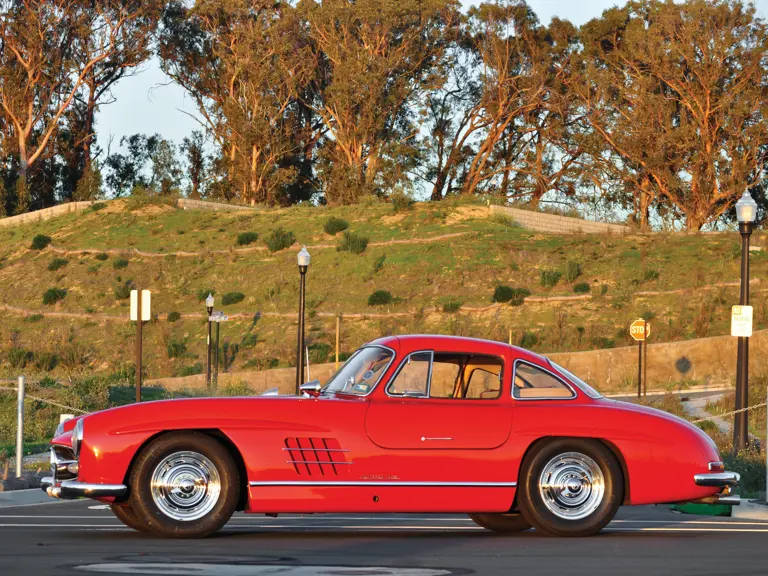
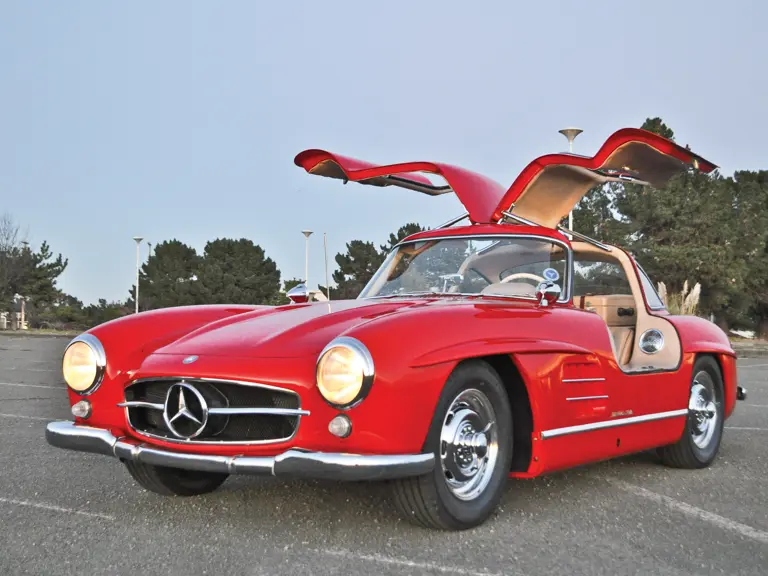
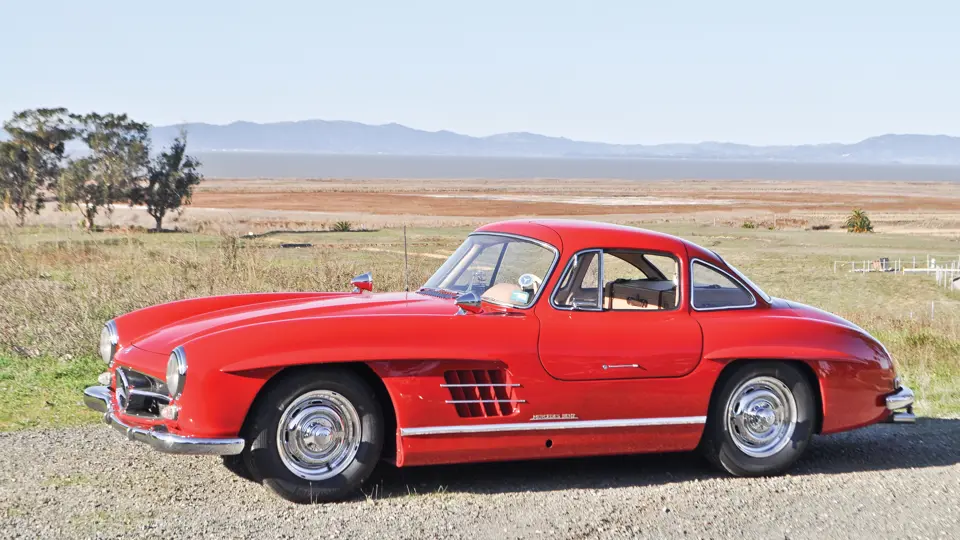
 | Phoenix, Arizona
| Phoenix, Arizona
